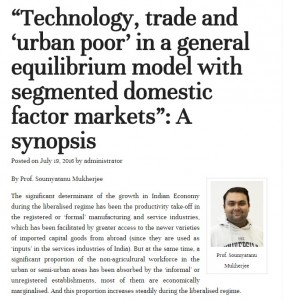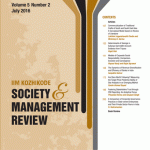SHAMELESSLY CHANGELES
By Prof. Mahesh P. Bhave
If you go to Reliance Fresh or Big Bazaar, and are about to pay for the merchandize you have bought, chances are greater than even that the person at the cash register has no change to give you. He will ask you if you could produce the exact amount.
If asked as a sheepish request, I am able to occasionally forgive. Yet most times, the tone is: what kind of a shopper are you that you do not carry exact change for my convenience?
I once tried telling the film-star wannabe behind the cash register in Pune – tight shirt, even tighter trousers, and hair slickly perfect – that it was his and his store’s duty to always have change before letting customers stand in the line. He did not say anything. But his expression was: Your advice for your own galaxy; this is India. In lieu of change, he offered me Cadbury’s candy.
Despite Consumer Behavior courses taught en masse in MBA programs, customer centricity is absent in new Indian retail (and elsewhere in India too, but more of that in future articles). I am all for the convenience of open shelves, and putting things in the basket, or taking things out of it, until I reach the point of payment. Lines are bad enough, but I could do without the quasi-robots on the other side of the counter.
The vaani, the corner grocery proprietor who has been replaced by the multi-location retailers’ institutional services, was otherwise. He knew how to treat each customer professionally yet personally while working fast. He wrapped whatever you ordered, in folded paper with magic fingers, and nothing spilled. And whatever had to be placed in paper bags, he wrapped a string around it from a spool hanging at the roof. The knots at the top of the bag, and the breaking of the thread with a quick tug in a single movement, were art. Everything ordered was customized by weight, touched by hand, alas – I ran my fingers through the wheat and rice in open bags – and wrapped. I don’t miss those days, yet cannot help admire, from memory, the deft efficiency of that retailer, and contrast with the brassy sass of today.
In the US, I cannot imagine any retailer running out of change. At the turn of every shift, the new cashier comes with well-wrapped bundles of coins of all denominations, empties them into the drawer, and only then begins checking out customers. All transactions are correct to the penny – no chocolates as coin. Why Indian retailers don’t think it important to carry sufficient change in their registers surprises me, and I have a theory about it.
When buying from the vaani, we dealt with the owner-proprietor, the CEO of his own shop. Naturally, he acted responsibly like any business owner or senior executive. The staff at today’s cash registers is like machines – low level, likely part-time employees, and with no career trajectory to look forward to. The customer belongs to a system of impersonal, quasi-mechanized transactions. The check out staff clock hours, get paid, and leave, and stay out of trouble. They perceive only an indirect association of any customer to their own livelihood.
Meanwhile, the business of the grocery store has moved higher to the store manager, who supervises a staff of hundreds. The Big Bazaars of India have yet to mature to the point that all their employees are professionals. No senior manager has considered change at the cash register as an important customer service issue, though in theory they have learned to pay attention to customer “touch points.”
To be sure, debit cards can eliminate the change hassle, but not many in India use cards; the swipe terminal is seldom prominently placed at checkout.
On IIM Kozhikode campus, we have a Milma booth, the retail store belonging to Kerala cooperative milk marketing federation, similar to the Amul Milk cooperative, that carries a variety of milk products from pedhas to ice cream. I typically need a half-liter milk pack (3% milk fat, homogenized) from the store every two days, and occasionally 200 ml curd (or yogurt). I used to normally buy the milk for `17.50 and since the store typically did not have the needed ` 2.50 in change, the franchisee and I kept the outstanding balance in our heads, and adjusted the amount over weeks. Then I tired of keeping track. If I bought both the curd (` 22) and the milk, the amount came to ` 39.50. I was willing to forego the ` 0.50 in the interest of relieving my mind of accounting; it was easy to give two 20 rupee notes or four 10 rupee notes and be done.
This has continued for several weeks now, and my mind is at rest. Yet this thought persists: If I carry candy in my pocket, will the toll-booth or retailer accept that as change?
Mahesh P. Bhave is a visiting professor of strategy at IIM Kozhikode


















 Users Today : 51
Users Today : 51 Users Yesterday : 409
Users Yesterday : 409 This Month : 7702
This Month : 7702 This Year : 112830
This Year : 112830 Total Users : 536818
Total Users : 536818 Who's Online : 3
Who's Online : 3